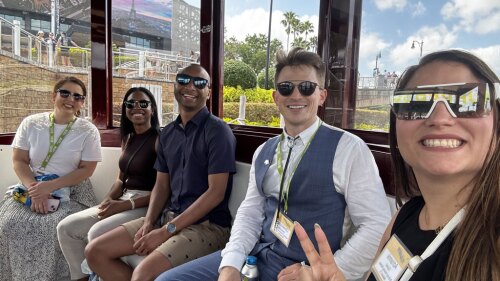Development and Construction
Data centers entail a massive carbon footprint, both physically and operationally, and have often been criticized for their significant energy consumption. The environmental consequences have become even more acute with the rise of AI, which requires enormous computing power and cooling. Cities, designers, and policymakers now face the urgent challenge of reimagining these resource-intensive facilities so that they can meet rising energy demands while mitigating climate pressures, ensuring these buildings enhance their immediate environments rather than compromise them. The Terra Ventures Data Center in San Jose, California, exemplifies this socially responsible approach. Expected to be completed in 2027, the new facility aims to showcase how careful planning can meet both global demand and local responsibility.
Best practices for acquisition and redevelopment
A new report by the construction scheduling platform Planera shows which U.S. states are adding the most new housing in 2025.
Few properties in South Florida, or ones well beyond the area, embody vision and resilience quite like Pier Sixty-Six. With its unmistakable spire-crowned tower, set along Fort Lauderdale’s storied Intracoastal Waterway, the landmark has defined the city’s skyline for more than half a century. As a multi-billion-dollar redevelopment of this 32 acre (13 ha) waterfront is now complete, Pier Sixty-Six stands as a model for how iconic real estate assets can be reborn, honoring their history while shaping the next century of urban waterfront development.
“The primary advantage every modular project has, if you do it right, is time savings,” said Mark Donahue—principal, design, for Lowney Architecture—during the “Offsite Evolved: How Today’s Prefab, Modular, and 3D-Printing Solutions Deliver Proven Speed, Savings, and Scale” panel at the ULI Fall Meeting in San Francisco. “You can, on a, say, 24-month construction project, save six to eight weeks.”
The 2025 Lewis Center Sustainability Forum, held during the ULI Fall Meeting in San Francisco, explored ways that local leaders in planning, policy, and development are advancing urban strength and adaptability amid increasing climate and social stresses.
Around the turn of the 21st century, downtown Kansas City, Missouri, faced challenges familiar to many American cities: abandoned buildings and surface parking lots filled 10 core blocks despite multiple redevelopment attempts dating to the 1960s. The downtown residential population was sparse, and some 60,000 downtown office workers made haste for the suburbs at 5 o’clock each weekday.
At the 2025 ULI Fall Meeting in San Francisco, leaders from across the development and construction industries discussed how they are adapting to a volatile yet stabilizing housing landscape in a session called “Report from the Field: Wrestling with the Cost of Housing Construction.” Despite headlines about tariffs, labor shortages, and inflation, the panelists agreed that the cost environment has settled into what one called a “new normal.”
The neighborhood will be home to more than 18,000 people, with a 21st-century focus on sustainability, innovation, and community
Each year, the ULI Young Leaders Exchange (YLX) selects a dynamic city as the backdrop for an immersive exploration of urban development. It brings together the most promising minds in real estate, planning, and design across the Americas—not simply to observe but also to engage, collaborate, and shape the industry’s future. To that end, in April, “YLX 2025 Orlando Unbound—The Space Between” welcomed 51 registered attendees representing 22 District Councils, including three returning participants from past exchanges.










